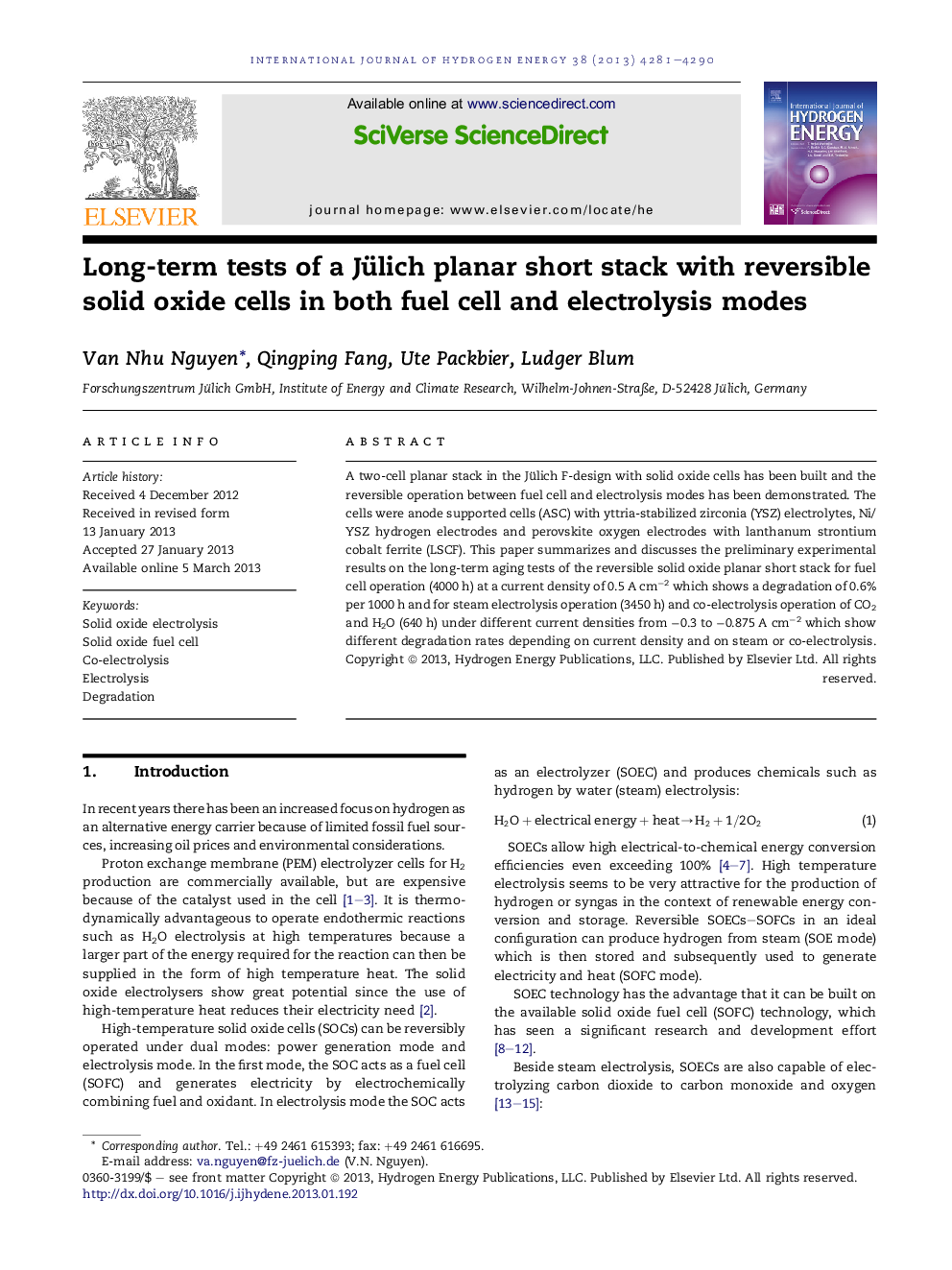| Article ID | Journal | Published Year | Pages | File Type |
|---|---|---|---|---|
| 1278120 | International Journal of Hydrogen Energy | 2013 | 10 Pages |
A two-cell planar stack in the Jülich F-design with solid oxide cells has been built and the reversible operation between fuel cell and electrolysis modes has been demonstrated. The cells were anode supported cells (ASC) with yttria-stabilized zirconia (YSZ) electrolytes, Ni/YSZ hydrogen electrodes and perovskite oxygen electrodes with lanthanum strontium cobalt ferrite (LSCF). This paper summarizes and discusses the preliminary experimental results on the long-term aging tests of the reversible solid oxide planar short stack for fuel cell operation (4000 h) at a current density of 0.5 A cm−2 which shows a degradation of 0.6% per 1000 h and for steam electrolysis operation (3450 h) and co-electrolysis operation of CO2 and H2O (640 h) under different current densities from −0.3 to −0.875 A cm−2 which show different degradation rates depending on current density and on steam or co-electrolysis.
► A two-cell planar stack in the Jülich F-design with solid oxide cells was tested. ► Long-term aging tests under both fuel cell and electrolysis modes were demonstrated. ► Stack was operated for more than 8100 h. ► LSCF is presented as good material for reversible oxygen electrodes.
